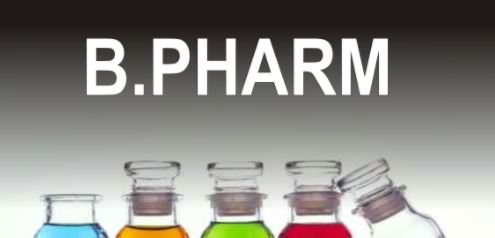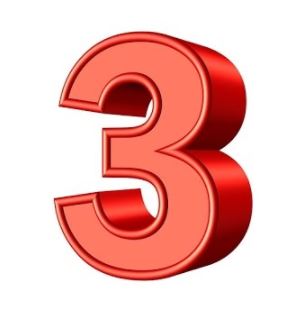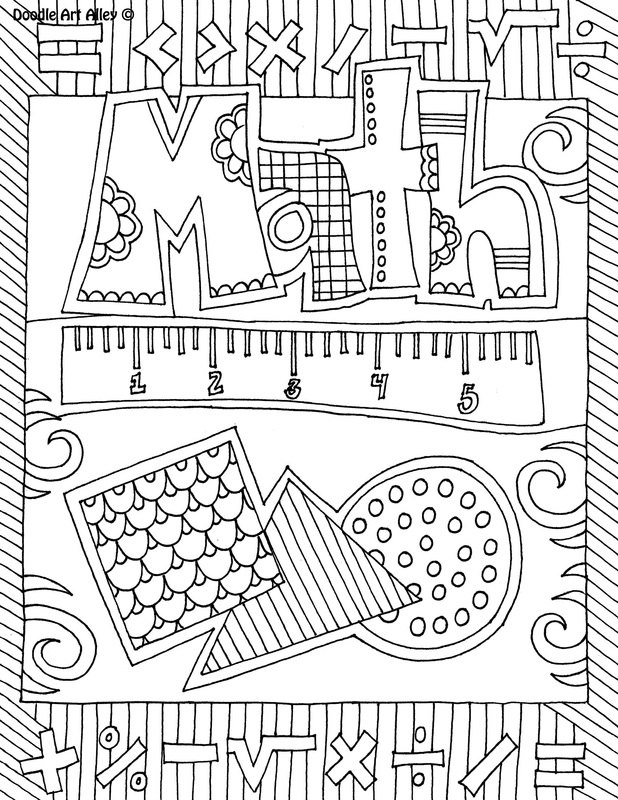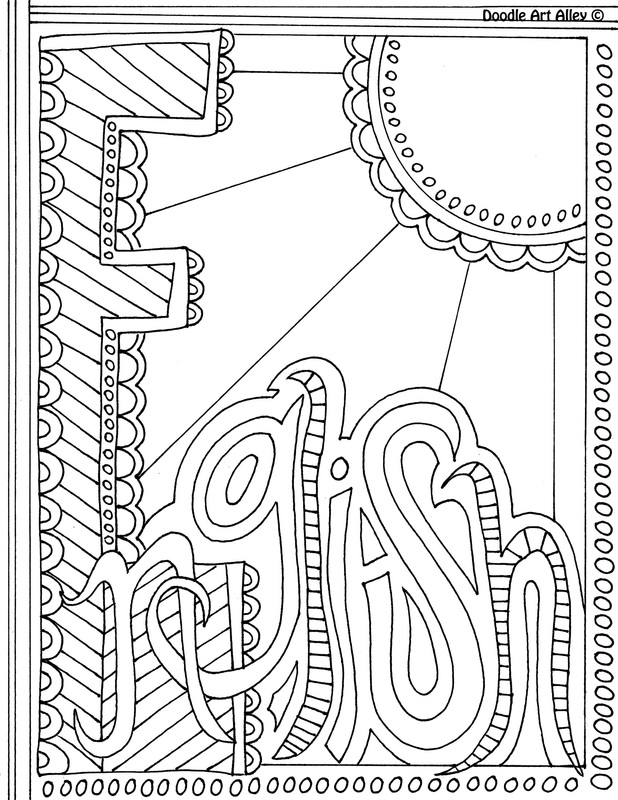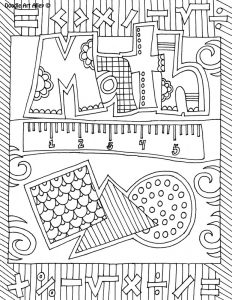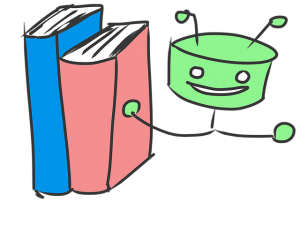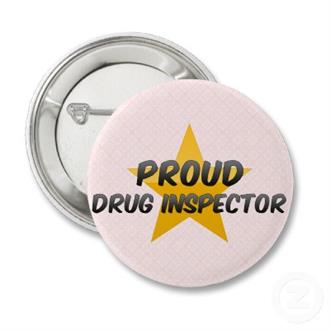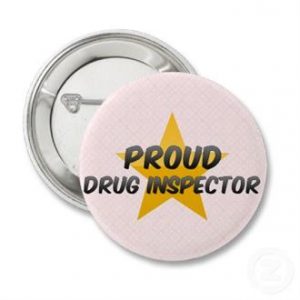B. Pharmacy 3rd Year Subjects and Syllabus
According to reports every year millions of students are joining B. Pharmacy to study Pharmacy as this is one of the finest education degrees. In the 3rd year of B. Pharm degree, every candidate shall be required to work for at least 150 hours spread over four weeks in a Pharmaceutical Industry/Hospital. It includes Production unit, Quality Control department, Quality Assurance department, Analytical laboratory, Chemical manufacturing unit, Pharmaceutical R&D, Hospital (Clinical Pharmacy), Clinical Research Organization, Community Pharmacy, etc. In between the Semester 6 and Semester 7 one shall submit a satisfactory report of such work and certificate duly signed by the authority of training organization to the head of the institute. Hence, let us also get acquainted with some terms related to the Pharmacy profession.
In the Pharmaceutical Industry, pharmacists are employed in manufacturing, product development, research, quality control, quality assurance, marketing, sales and administration. Community/Retail Pharmacy encompasses the practice of pharmacy in community settings or retail outlets. Pharmacists, (themselves become the owner of their own pharmacies) are actively educate patients, maintain and monitor drug records and ensure information resource of the highest calibre. Regulatory Bodies control and regulate medicines for the Drug and Pharmaceutical industry. At the federal or provincial level, posts like drug inspectors, drug controllers, and pharmacist/chief pharmacists at drug testing laboratories and Commissioned officers in Armed Forces are deployed.
The curriculum of the B. Pharm 3rd year is as follows:
B pharm Subjects for 3rd year (Semester 5)
| Subjects | Theory | Practical | ||
| Hours | Marks | Hours | Marks | |
| MEDICINAL CHEMISTRY-II | 45 | 100 | ||
| INDUSTRIAL PHARMACY | 45 | 100 | 4/week | 50 |
| PHARMACOLOGY-II | 45 | 100 | 4/week | 50 |
| PHARMACOGNOSY AND PHYTOCHEMISTRY II | 45 | 100 | 4/week | 50 |
| PHARMACEUTICAL JURISPRUDENCE | 45 | 100 | ||
| Total marks | 650 | |||
B pharmacy Syllabus for Semester 5
Subject: MEDICINAL CHEMISTRY – II
| Theory |
| Unit I
Antihistaminic agents: Histamine, receptors and their distribution in the Human body H1–antagonists: Diphenhydramine hydrochloride*, Dimenhydrinate, Doxylamines cuccinate, Clemastine fumarate, Diphenylphyraline hydrochloride, Tripelenamine hydrochloride, Chlorcyclizine hydrochloride, Meclizine hydrochloride, Buclizine hydrochloride, Chlorpheniramine maleate, Triprolidine hydrochloride*, Phenidamine tartarate, Promethazine hydrochloride*, Trimeprazine tartrate, Cyproheptadine hydrochloride, Azatidine maleate, Astemizole, Loratadine, Cetirizine, Levocetrazine Cromolyn sodium H2-antagonists: Cimetidine*, Famotidine, Ranitidin. Gastric Proton pump inhibitors: Omeprazole, Lansoprazole, Rabeprazole, Pantoprazole Anti-neoplastic agents: Alkylating agents: Meclorethamine*, Cyclophosphamide, Melphalan, Chlorambucil, Busulfan, Thiotepa Antimetabolites: Mercaptopurine*, Thioguanine, Fluorouracil, Floxuridine, Cytarabine, Methotrexate*, Azathioprine Antibiotics: Dactinomycin, Daunorubicin, Doxorubicin, Bleomycin Plant products: Etoposide, Vinblastin sulphate, Vincristin sulphate Miscellaneous: Cisplatin, Mitotane Unit II Anti-anginal: Vasodilators: Amyl nitrite, Nitroglycerin*, Pentaerythritol tetranitrate, Isosorbide dinitrite*, Dipyridamole. Calcium channel blockers: Verapamil, Bepridil hydrochloride, Diltiazem hydrochloride, Nifedipine, Amlodipine, Felodipine, Nicardipine, Nimodipine. Diuretics: Carbonic anhydrase inhibitors: Acetazolamide*, Methazolamide, Dichlorphenamide. Thiazides: Chlorthiazide*, Hydrochlorothiazide, Hydroflumethiazide, Cyclothiazide, Loop diuretics: Furosemide*, Bumetanide, Ethacrynic acid. Potassium sparing Diuretics: Spironolactone, Triamterene, Amiloride. Osmotic Diuretics: Mannitol Anti-hypertensive Agents: Timolol, Captopril, Lisinopril, Enalapril, Benazepril hydrochloride, Quinapril hydrochloride, Methyldopate hydrochloride,* Clonidine hydrochloride, Guanethidine monosulphate, Guanabenz acetate, Sodium nitroprusside, Diazoxide,Minoxidil, Reserpine, Hydralazine hydrochloride. Unit III Anti-arrhythmic Drugs: Quinidine sulphate, Procainamide hydrochloride, Disopyramide phosphate*, Phenytoin sodium, Lidocaine hydrochloride, Tocainide hydrochloride, Mexiletine hydrochloride, Lorcainide hydrochloride, Amiodarone, Sotalol. Anti-hyperlipidemic agents: Clofibrate, Lovastatin, Cholesteramine and Cholestipol Coagulant & Anticoagulants: Menadione, Acetomenadione, Warfarin*, Anisindione, clopidogrel Drugs used in Congestive Heart Failure: Digoxin, Digitoxin, Nesiritide, Bosentan, Tezosentan. Unit IV Drugs acting on Endocrine system Nomenclature, Stereochemistry and metabolism of steroids Sex hormones: Testosterone, Nandralone, Progestrones, Oestriol, Oestradiol, Oestrione, Diethyl stilbestrol. Drugs for erectile dysfunction: Sildenafil, Tadalafil. Oral contraceptives: Mifepristone, Norgestril, Levonorgestrol Corticosteroids: Cortisone, Hydrocortisone, Prednisolone, Betamethasone, Dexamethasone Thyroid and antithyroid drugs: L-Thyroxine, L-Thyronine, Propylthiouracil, Methimazole. Unit V Antidiabetic agents: Insulin and its preparations Sulfonyl ureas: Tolbutamide*, Chlorpropamide, Glipizide, Glimepiride. Biguanides: Metformin. Thiazolidinediones: Pioglitazone, Rosiglitazone. Meglitinides: Repaglinide, Nateglinide. Glucosidase inhibitors: Acrabose, Voglibose. Local Anesthetics: SAR of Local anesthetics Benzoic Acid derivatives; Cocaine, Hexylcaine, Meprylcaine, Cyclomethycaine, Piperocaine. Amino Benzoic acid derivatives: Benzocaine*, Butamben, Procaine*, Butacaine, Propoxycaine, Tetracaine, Benoxinate. Lidocaine/Anilide derivatives: Lignocaine, Mepivacaine, Prilocaine, Etidocaine. Miscellaneous: Phenacaine, Diperodon, Dibucaine.* |
Subject: INDUSTRIAL PHARMACY
| Theory | Practical |
| Unit I
Preformulation Studies: Introduction to preformulation, goals and objectives, study of physicochemical characteristics of drug substances. a. Physical properties: Physical form (crystal & amorphous), particle size, shape, flow properties, solubility profile (pKa, pH, partition coefficient), polymorphism b. Chemical Properties: Hydrolysis, oxidation, reduction, racemisation, polymerization BCS classification of drugs & its significant Application of preformulation considerations in the development of solid, liquid oral and parenteral dosage forms and its impact on stability of dosage forms. Unit II Tablets: a. Introduction, ideal characteristics of tablets, classification of tablets. Excipients, Formulation of tablets, granulation methods, compression and processing problems. Equipments and tablet tooling. b. Tablet coating: Types of coating, coating materials, formulation of coating composition, methods of coating, equipment employed and defects in coating. c. Quality control tests: In process and finished product tests Liquid orals: Formulation and manufacturing consideration of syrups and elixirs suspensions and emulsions; Filling and packaging; evaluation of liquid orals official in pharmacopoeia Unit III Capsules: a. Hard gelatin capsules: Introduction, Production of hard gelatin capsule shells. Size of capsules, Filling, finishing and special techniques of formulation of hard gelatine capsules, manufacturing defects. In process and final product quality control tests for capsules. b. Soft gelatin capsules: Nature of shell and capsule content, size of capsules,importance of base adsorption and minim/gram factors, production, in process and final product quality control tests. Packing, storage and stability testing of soft gelatin capsules and their applications. Pellets: Introduction, formulation requirements, pelletization process, equipments for manufacture of pellets Unit IV Parenteral Products: a. Definition, types, advantages and limitations. Preformulation factors and essential equirements, vehicles, additives, importance of isotonicity b. Production procedure, production facilities and controls, aseptic processing c. Formulation of injections, sterile powders, large volume parenterals and lyophilized products. d. Containers and closures selection, filling and sealing of ampoules, vials and infusion fluids. Quality control tests of parenteral products. Ophthalmic Preparations: Introduction, formulation considerations; formulation of eye drops, eye ointments and eye lotions; methods of preparation; labeling, containers; evaluation of ophthalmic preparations Unit V Cosmetics: Formulation and preparation of the following cosmetic preparations: lipsticks, shampoos, cold cream and vanishing cream, tooth pastes, hair dyes and sunscreens. Pharmaceutical Aerosols: Definition, propellants, containers, valves, types of aerosol systems; formulation and manufacture of aerosols; Evaluation of aerosols; Quality control and stability studies. Packaging Materials Science: Materials used for packaging of pharmaceutical products, factors influencing choice of containers, legal and official requirements for containers, stability aspects of packaging materials, quality control tests. |
1. Preformulation studies on paracetamol/asparin/or any other drug
2. Preparation and evaluation of Paracetamol tablets
3. Preparation and evaluation of Aspirin tablets
4. Coating of tablets- film coating of tables/granules
5. Preparation and evaluation of Tetracycline capsules
6. Preparation of Calcium Gluconate injection
7. Preparation of Ascorbic Acid injection
8. Qulaity control test of (as per IP) marketed tablets and capsules
9. Preparation of Eye drops/ and Eye ointments
10. Preparation of Creams (cold / vanishing cream)
11. Evaluation of Glass containers (as per IP) |
]’]999
Subject: PHARMACOLOGY-II
| Theory | Practical |
| Unit I
1. Pharmacology of drugs acting on cardio vascular system a. Introduction to hemodynamic and electrophysiology of heart. b. Drugs used in congestive heart failure c. Anti-hypertensive drugs. d. Anti-anginal drugs. e. Anti-arrhythmic drugs. f. Anti-hyperlipidemic drugs. Unit II 1. Pharmacology of drugs acting on cardio vascular system a. Drug used in the therapy of shock. b. Hematinics, coagulants and anticoagulants. c. Fibrinolytics and anti-platelet drugs d. Plasma volume expanders 2. Pharmacology of drugs acting on urinary system a. Diuretics b. Anti-diuretics. Unit III 3. Autocoids and related drugs a. Introduction to autacoids and classification b. Histamine, 5-HT and their antagonists. c. Prostaglandins, Thromboxanes and Leukotrienes. d. Angiotensin, Bradykinin and Substance P. e. Non-steroidal anti-inflammatory agents f. Anti-gout drugs g. Antirheumatic drugs Unit IV 5. Pharmacology of drugs acting on endocrine system a. Basic concepts in endocrine pharmacology. b. Anterior Pituitary hormones- analogues and their inhibitors. c. Thyroid hormones- analogues and their inhibitors. d. Hormones regulating plasma calcium level- Parathormone, Calcitonin and Vitamin-D. d. Insulin, Oral Hypoglycemic agents and glucagon. e. ACTH and corticosteroids. Unit V 5. Pharmacology of drugs acting on endocrine system a. Androgens and Anabolic steroids. b. Estrogens, progesterone and oral contraceptives. c. Drugs acting on the uterus. 6. Bioassay a. Principles and applications of bioassay. b. Types of bioassay c. Bioassay of insulin, oxytocin, vasopressin, ACTH, d-tubocurarine, digitalis, histamine and 5-HT. |
1. Introduction to in-vitro pharmacology and physiological salt solutions.
2. Effect of drugs on isolated frog heart.
3. Effect of drugs on blood pressure and heart rate of dog.
4. Study of diuretic activity of drugs using rats/mice.
5. DRC of acetylcholine using frog rectus abdominis muscle.
6. Effect of physostigmine and atropine on DRC of acetylcholine using frog rectus abdominis muscle and rat ileum respectively.
7. Bioassay of histamine using guinea pig ileum by matching method.
8. Bioassay of oxytocin using rat uterine horn by interpolation method.
9. Bioassay of serotonin using rat fundus strip by three point bioassay.
10. Bioassay of acetylcholine using rat ileum/colon by four point bioassay.
11. Determination of PA2 value of prazosin using rat anococcygeus muscle (by Schilds plot method).
12. Determination of PD2 value using guinea pig ileum.
13. Effect of spasmogens and spasmolytics using rabbit jejunum.
14. Anti-inflammatory activity of drugs using carrageenan induced paw-edema model.
15. Analgesic activity of drug using central and peripheral methods
Note: All laboratory techniques and animal experiments are demonstrated by simulated experiments by softwares and videos |
Subject: PHARMACOGNOSY AND PHYTOCHEMISTRY II
| Theory | Practical |
| Unit I
Metabolic pathways in higher plants and their determination a) Brief study of basic metabolic pathways and formation of different secondary metabolites through these pathways- Shikimic acid pathway, Acetate pathways and Amino acid pathway. b) Study of utilization of radioactive isotopes in the investigation of Biogenetic studies. Unit II General introduction, composition, chemistry & chemical classes, biosources, therapeutic uses and commercial applications of following secondary metabolites: Alkaloids: Vinca, Rauwolfia, Belladonna, Opium, Phenylpropanoids and Flavonoids: Lignans, Tea, Ruta Steroids, Cardiac Glycosides & Triterpenoids: Liquorice, Dioscorea, Digitalis Volatile oils: Mentha, Clove, Cinnamon, Fennel, Coriander Tannins: Catechu, Pterocarpus Resins: Benzoin, Guggul, Ginger, Asafoetida, Myrrh, Colophony Glycosides: Senna, Aloes, Bitter Almond Iridoids, Other terpenoids & Naphthaquinones: Gentian, Artemisia, taxus, carotenoids Unit III Isolation, Identification and Analysis of Phytoconstituents a) Terpenoids: Menthol, Citral, Artemisin b) Glycosides: Glycyrhetinic acid & Rutin c) Alkaloids: Atropine, Quinine, Reserpine, Caffeine d) Resins: Podophyllotoxin, Curcumin Unit IV Industrial production, estimation and utilization of the following phytoconstituents: Forskolin, Sennoside, Artemisinin, Diosgenin, Digoxin, Atropine, Podophyllotoxin, Caffeine, Taxol, Vincristine and Vinblastine Unit V Basics of Phytochemistry Modern methods of extraction, application of latest techniques like Spectroscopy, chromatography and electrophoresis in the isolation, purification and identification of crude drugs |
1. Morphology, histology and powder characteristics & extraction & detection of:
Cinchona, Cinnamon, Senna, Clove, Ephedra, Fennel and Coriander
2. Exercise involving isolation & detection of active principles a. Caffeine – from tea dust. b. Diosgenin from Dioscorea c. Atropine from Belladonna d. Sennosides from Senna
3. Separation of sugars by Paper chromatography 4. TLC of herbal extract
5. Distillation of volatile oils and detection of phytoconstitutents by TLC
6. Analysis of crude drugs by chemical tests: (i) Asafoetida (ii) Benzoin (iii) Colophony (iv) Aloes (v) Myrrh |
Subject: PHARMACEUTICAL JURISPRUDENCE
| Theory |
| Unit I
Drugs and Cosmetics Act, 1940 and its rules 1945: Objectives, Definitions, Legal definitions of schedules to the Act and Rules Import of drugs – Classes of drugs and cosmetics prohibited from import, Import under license or permit. Offences and penalties. Manufacture of drugs – Prohibition of manufacture and sale of certain drugs, Conditions for grant of license and conditions of license for manufacture of drugs, Manufacture of drugs for test, examination and analysis, manufacture of new drug, loan license and repacking license. Unit II Drugs and Cosmetics Act, 1940 and its rules 1945. Detailed study of Schedule G, H, M, N, P,T,U, V, X, Y, Part XII B, Sch F & DMR (OA) Sale of Drugs – Wholesale, Retail sale and Restricted license. Offences and penalties Labeling & Packing of drugs- General labeling requirements and specimen labels for drugs and cosmetics, List of permitted colors. Offences and penalties. Administration of the Act and Rules – Drugs Technical Advisory Board, Central drugs Laboratory, Drugs Consultative Committee, Government drug analysts, Licensing authorities, controlling authorities, Drugs Inspectors Unit III · Pharmacy Act –1948: Objectives, Definitions, Pharmacy Council of India; its constitution and functions, Education Regulations, State and Joint state pharmacy councils; constitution and functions, Registration of Pharmacists, Offences and Penalties · Medicinal and Toilet Preparation Act –1955: Objectives, Definitions, Licensing, Manufacture In bond and Outside bond, Export of alcoholic preparations, Manufacture of Ayurvedic, Homeopathic, Patent & Proprietary Preparations. Offences and Penalties. · Narcotic Drugs and Psychotropic substances Act-1985 and Rules: Objectives, Definitions, Authorities and Officers, Constitution and Functions of narcotic & Psychotropic Consultative Committee, National Fund for Controlling the Drug Abuse, Prohibition, Control and Regulation, opium poppy cultivation and production of poppy straw, manufacture, sale and export of opium, Offences and Penalties Unit IV · Study of Salient Features of Drugs and Magic Remedies Act and its rules: Objectives, Definitions, Prohibition of certain advertisements, Classes of Exempted advertisements, Offences and Penalties · Prevention of Cruelty to animals Act-1960: Objectives, Definitions, Institutional Animal Ethics Committee, CPCSEA guidelines for Breeding and Stocking of Animals, Performance of Experiments, Transfer and acquisition of animals for experiment, Records, Power to suspend or revoke registration, Offences and Penalties · National Pharmaceutical Pricing Authority: Drugs Price Control Order (DPCO)- 2013. Objectives, Definitions, Sale prices of bulk drugs, Retail price of formulations, Retail price and ceiling price of scheduled formulations, National List of Essential Medicines (NLEM) Unit V · Pharmaceutical Legislations – A brief review, Introduction, Study of drugs enquiry committee, Health survey and development committee, Hathi committee and Mudaliar committee · Code of Pharmaceutical ethics D efinition, Pharmacist in relation to his job, trade, medical profession and his profession, Pharmacist’s oath · Medical Termination of Pregnancy Act · Right to Information Act · Introduction to Intellectual Property Rights (IPR) |
B Pharm Subjects for Semester 6
| Subjects | Theory | Practical | ||
| Hours | Marks | Hours | Marks | |
| MEDICINAL CHEMISTRY-III | 45 | 100 | 4/week | 50 |
| PHARMACOLOGY-III | 45 | 100 | 4/week | 50 |
| HERBAL DRUG TECHNOLOGY | 45 | 100 | 4/week | 50 |
| BIOPHARMACEUTICS AND PHARMACOKINETICS | 45 | 100 | – | – |
| PHARMACEUTICAL BIOTECHNOLOGY | 45 | 100 | – | – |
| PHARMACEUTICAL QUALITY ASSURANCE | 45 | 100 | – | – |
| Total marks | 750 | |||
B pharmacy Syllabus for Semester 6
Subject: MEDICINAL CHEMISTRY – III
| Theory | Practical |
| Unit I
Antibiotics Historical background, Nomenclature, Stereochemistry, Structure activity relationship, Chemical degradation classification and important products of the following classes. β-Lactam antibiotics: Penicillin, Cepholosporins, β- Lactamase inhibitors, Monobactams Aminoglycosides: Streptomycin, Neomycin, Kanamycin Tetracyclines: Tetracycline,Oxytetracycline, Chlortetracycline, Minocycline, Doxycyclin Unit II Antibiotics Historical background, Nomenclature, Stereochemistry, Structure activity relationship, Chemical degradation classification and important products of the following classes. Macrolide: Erythromycin Clarithromycin, Azithromycin. Miscellaneous: Chloramphenicol*, Clindamycin. Prodrugs: Basic concepts and application of prodrugs design. Antimalarials: Etiology of malaria. Quinolines: SAR, Quinine sulphate, Chloroquine*, Amodiaquine, Primaquine phosphate, Pamaquine*, Quinacrine hydrochloride, Mefloquine. Biguanides and dihydro triazines: Cycloguanil pamoate, Proguanil. Miscellaneous: Pyrimethamine, Artesunete, Artemether, Atovoquone. Unit III Anti-tubercular Agents Synthetic anti tubercular agents: Isoniozid*, Ethionamide, Ethambutol, Pyrazinamide, Para amino salicylic acid.* Anti tubercular antibiotics: Rifampicin, Rifabutin, Cycloserine Streptomycine, Capreomycin sulphate. Urinary tract anti-infective agents Quinolones: SAR of quinolones, Nalidixic Acid,Norfloxacin, Enoxacin, Ciprofloxacin*, Ofloxacin, Lomefloxacin, Sparfloxacin, Gatifloxacin, Moxifloxacin Miscellaneous: Furazolidine, Nitrofurantoin*, Methanamine. Antiviral agents: Amantadine hydrochloride, Rimantadine hydrochloride, Idoxuridine trifluoride, Acyclovir*, Gancyclovir, Zidovudine, Didanosine, Zalcitabine, Lamivudine, Loviride, Delavirding, Ribavirin, Saquinavir, Indinavir, Ritonavir. Unit IV Antifungal agents: Antifungal antibiotics: Amphotericin-B, Nystatin, Natamycin, Griseofulvin. Synthetic Antifungal agents: Clotrimazole, Econazole, Butoconazole, Oxiconazole Tioconozole, Miconazole*, Ketoconazole, Terconazole, Itraconazole, Fluconazole, Naftifine hydrochloride, Tolnaftate*. Anti-protozoal Agents: Metronidazole*, Tinidazole, Ornidazole, Diloxanide, Iodoquinol, Pentamidine Isethionate, Atovaquone, Eflornithine. Anthelmintics: Diethylcarbamazine citrate*, Thiabendazole, Mebendazole*, Albendazole, Niclosamide, Oxamniquine, Praziquantal, Ivermectin. Sulphonamides and Sulfones Historical development, chemistry, classification and SAR of Sulfonamides: Sulphamethizole, Sulfisoxazole, Sulphamethizine, Sulfacetamide*, Sulphapyridine, Sulfamethoxaole*, Sulphadiazine, Mefenide acetate, Sulfasalazine. Folate reductase inhibitors: Trimethoprim*, Cotrimoxazole. Sulfones: Dapsone*. Unit V Introduction to Drug Design Various approaches used in drug design. Physicochemical parameters used in quantitative structure activity relationship (QSAR) such as partition coefficient, Hammet’s electronic parameter, Tafts steric parameter and Hansch analysis. Pharmacophore modeling and docking techniques. Combinatorial Chemistry: Concept and applications chemistry: solid phase and solution phase synthesis. |
I Preparation of drugs and intermediates
1 Sulphanilamide 2 7-Hydroxy, 4-methyl coumarin 3 Chlorobutanol 4 Triphenyl imidazole 5 Tolbutamide 6 Hexamine
II Assay of drugs 1 Isonicotinic acid hydrazide 2 Chloroquine 3 Metronidazole 4 Dapsone 5 Chlorpheniramine maleate 6 Benzyl penicillin
III Preparation of medicinally important compounds or intermediates by Microwave irradiation technique
IV Drawing structures and reactions using chem draw®
V Determination of physicochemical properties such as logP, clogP, MR, Molecular weight, Hydrogen bond donors and acceptors for class of drugs course content using drug design software Drug likeliness screening (Lipinskies RO5) |
B Pharm Subject: PHARMACOLOGY-III
| Theory | Practical |
| Unit I
1. Pharmacology of drugs acting on Respiratory system a. Anti -asthmatic drugs b. Drugs used in the management of COPD c. Expectorants and antitussives d. Nasal decongestants e. Respiratory stimulants 2. Pharmacology of drugs acting on the Gastrointestinal Tract a. Antiulcer agents. b. Drugs for constipation and diarrhoea. c. Appetite stimulants and suppressants. d. Digestants and carminatives. e. Emetics and anti-emetics. Unit II 3. Chemotherapy a. General principles of chemotherapy. b. Sulfonamides and cotrimoxazole. c. Antibiotics- Penicillins, cephalosporins, chloramphenicol, macrolides, quinolones and fluoroquinolins, tetracycline and aminoglycosides. Unit III 3. Chemotherapy a. Antitubercular agents b. Antileprotic agents c. Antifungal agents d. Antiviral drugs e.Anthelmintics f. Antimalarial drugs g. Antiamoebic agents Unit IV 3. Chemotherapy l. Urinary tract infections and sexually transmitted diseases. m. Chemotherapy of malignancy. 4. Immunopharmacology a. Immunostimulants b. Immunosuppressant Protein drugs, monoclonal antibodies, target drugs to antigen, biosimilars Unit V 5. Principles of toxicology a. Definition and basic knowledge of acute, subacute and chronic toxicity. b. Definition and basic knowledge of genotoxicity, carcinogenicity, teratogenicity and mutagenicity c. General principles of treatment of poisoning d. Clinical symptoms and management of barbiturates, morphine, organophosphosphorus compound and lead, mercury and arsenic poisoning. 6. Chronopharmacology a. Definition of rhythm and cycles. b. Biological clock and their significance leading to chronotherapy. |
1. Dose calculation in pharmacological experiments
2. Antiallergic activity by mast cell stabilization assay
3. Study of anti-ulcer activity of a drug using pylorus ligand (SHAY) rat model and NSAIDS induced ulcer model.
4. Study of effect of drugs on gastrointestinal motility
5. Effect of agonist and antagonists on guinea pig ileum
6. Estimation of serum biochemical parameters by using semi- auto analyser
7. Effect of saline purgative on frog intestine
8. Insulin hypoglycemic effect in rabbit
9. Test for pyrogens ( rabbit method)
10. Determination of acute oral toxicity (LD50) of a drug from a given data
11. Determination of acute skin irritation / corrosion of a test substance
12. Determination of acute eye irritation / corrosion of a test substance
13. Calculation of pharmacokinetic parameters from a given data
14. Biostatistics methods in experimental pharmacology( student’s t test, ANOVA)
15. Biostatistics methods in experimental pharmacology (Chi square test, Wilcoxon Signed Rank test)
*Experiments are demonstrated by simulated experiments/videos |
Subject: HERBAL DRUG TECHNOLOGY
| Theory | Practical |
| Unit I
Herbs as raw materials Definition of herb, herbal medicine, herbal medicinal product, herbal drug preparation. Source of Herbs Selection, identification and authentication of herbal materials. Processing of herbal raw material Biodynamic Agriculture Good agricultural practices in cultivation of medicinal plants including Organic farming. Pest and Pest management in medicinal plants: Biopesticides/Bioinsecticides. Indian Systems of Medicine a) Basic principles involved in Ayurveda, Siddha, Unani and Homeopathy. b) Preparation and standardization of Ayurvedic formulations viz Aristas and Asawas, Ghutika,Churna, Lehya and Bhasma. Unit II Nutraceuticals General aspects, Market, growth, scope and types of products available in the market. Health benefits and role of Nutraceuticals in ailments like Diabetes, CVS diseases, Cancer, Irritable bowel syndrome and various Gastro intestinal diseases. Study of following herbs as health food: Alfaalfa, Chicory, Ginger, Fenugreek, Garlic, Honey, Amla, Ginseng, Ashwagandha, Spirulina Herbal-Drug and Herb-Food Interactions: General introduction to interaction and classification. Study of following drugs and their possible side effects and interactions: Hypercium, kava-kava, Ginkobiloba, Ginseng, Garlic, Pepper & Ephedra. Unit III Herbal Cosmetics Sources and description of raw materials of herbal origin used via, fixed oils, waxes, gums colours, perfumes, protective agents, bleaching agents, antioxidants in products such as skincare, hair care and oral hygiene products. Herbal excipients: Herbal Excipients – Significance of substances of natural origin as excipients – colorants, sweeteners, binders, diluents, viscosity builders, disintegrants, flavors & perfumes. Herbal formulations : Conventional herbal formulations like syrups, mixtures and tablets and Novel dosage forms like phytosomes Unit IV Evaluation of Drugs WHO & ICH guidelines for the assessment of herbal drugs. Stability testing of herbal drugs. Patenting and Regulatory requirements of natural products: a) Definition of the terms: Patent, IPR, Farmers right, Breeder’s right, Bioprospecting and Biopiracy b) Patenting aspects of Traditional Knowledge and Natural Products. Case study of Curcuma & Neem. Regulatory Issues – Regulations in India (ASU DTAB, ASU DCC), Regulation of manufacture of ASU drugs – Schedule Z of Drugs & Cosmetics Act for ASU drugs. Unit V General Introduction to Herbal Industry Herbal drugs industry: Present scope and future prospects. A brief account of plant based industries and institutions involved in work on medicinal and aromatic plants in India. Schedule T – Good Manufacturing Practice of Indian systems of medicine Components of GMP (Schedule – T) and its objectives Infrastructural requirements, working space, storage area, machinery and equipments, standard operating procedures, health and hygiene, documentation and records. |
1. To perform preliminary phytochemical screening of crude drugs.
2. Determination of the alcohol content of Asava and Arista
3. Evaluation of excipients of natural origin
4. Incorporation of prepared and standardized extract in cosmetic formulations like creams, lotions and shampoos and their evaluation.
5. Incorporation of prepared and standardized extract in formulations like syrups, mixtures and tablets and their evaluation as per Pharmacopoeial requirements.
6. Monograph analysis of herbal drugs from recent Pharmacopoeias
7. Determination of Aldehyde content
8. Determination of Phenol content
9. Determination of total alkaloids |
Subject: BIOPHARMACEUTICS AND PHARMACOKINETICS
| Theory |
| Unit I
Introduction to Bio pharmaceutics Absorption; Mechanisms of drug absorption through GIT, factors influencing drug absorption though GIT, absorption of drug from Non per oral extra-vascular routes, Distribution Tissue permeability of drugs, binding of drugs, apparent, volume of drug distribution, plasma and tissue protein binding of drugs, factors affecting protein-drug binding. Kinetics of protein binding, Clinical significance of protein binding of drugs Unit II Elimination: Drug metabolism and basic understanding metabolic pathways renal excretion of drugs, factors affecting renal excretion of drugs, renal clearance, Non renal routes of drug excretion of drugs Bioavailability and Bioequivalence: Definition and Objectives of bioavailability, absolute and relative bioavailability, measurement of bioavailability, in-vitro drug dissolution models, in-vitro–in-vivo correlations, bioequivalence studies, methods to enhance the dissolution rates and bioavailability of poorly soluble drugs. Unit III Pharmacokinetics: Definition and introduction to Pharmacokinetics, Compartment models, Non compartment models, physiological models, One compartment open model. (a). Intravenous Injection (Bolus) (b). Intravenous infusion and (c) Extra vascular administrations. Pharmacokinetics parameters – KE ,t1/2,Vd,AUC,Ka, Clt and CLR- definitions methods of eliminations, understanding of their significance and application Unit IV Multicompartment models: Two compartment open model. IV bolus, Kinetics of multiple dosing, steady state drug levels, calculation of loading and maintenance doses and their significance in clinical settings. Unit V Nonlinear Pharmacokinetics: a. Introduction, b. Factors causing Non-linearity. c. Michaelis-menton method of estimating parameters, Explanation with example of drugs. |
Subject: PHARMACEUTICAL BIOTECHNOLOGY
| Theory |
| Unit I
a) Brief introduction to Biotechnology with reference to Pharmaceutical Sciences. b) Enzyme Biotechnology- Methods of enzyme immobilization and applications. c) Biosensors- Working and applications of biosensors in Pharmaceutical Industries. d) Brief introduction to Protein Engineering. e) Use of microbes in industry. Production of Enzymes- General consideration – Amylase, Catalase, Peroxidase, Lipase, Protease, Penicillinase. f) Basic principles of genetic engineering. Unit II a) Study of cloning vectors, restriction endonucleases and DNA ligase. b) Recombinant DNA technology. Application of genetic engineering in medicine. c) Application of r DNA technology and genetic engineering in the production of: i) Interferon ii) Vaccines- hepatitis- B iii) Hormones-Insulin. d) Brief introduction to PCR Unit III Types of immunity- humoral immunity, cellular immunity a) Structure of Immunoglobulins b) Structure and Function of MHC c) Hypersensitivity reactions, Immune stimulation and Immune suppressions. d) General method of the preparation of bacterial vaccines, toxoids, viral vaccine, antitoxins, serum-immune blood derivatives and other products relative to immunity. e) Storage conditions and stability of official vaccines f) Hybridoma technology- Production, Purification and Applications g) Blood products and Plasma Substituties. Unit IV a) Immuno blotting techniques- ELISA, Western blotting, Southern blotting. b) Genetic organization of Eukaryotes and Prokaryotes c) Microbial genetics including transformation, transduction, conjugation, plasmids and transposons. d) Introduction to Microbial biotransformation and applications. e) Mutation: Types of mutation/mutants. Unit V a) Fermentation methods and general requirements, study of media, equipments, sterilization methods, aeration process, stirring. b) Large scale production fermenter design and its various controls. c) Study of the production of – penicillins, citric acid, Vitamin B12, Glutamic acid, Griseofulvin, d) Blood Products: Collection, Processing and Storage of whole human blood, dried human plasma, plasma Substituties. |
Subject: BP606TPHARMACEUTICAL QUALITY ASSURANCE
| Theory |
| Unit I
Quality Assurance and Quality Management concepts: Definition and concept of Quality control, Quality assurance and GMP Total Quality Management (TQM): Definition, elements, philosophies ICH Guidelines: purpose, participants, process of harmonization, Brief overview of QSEM, with special emphasis on Q-series guidelines, ICH stability testing guidelines Quality by design (QbD): Definition, overview, elements of QbD program, tools ISO 9000 & ISO14000: Overview, Benefits, Elements, steps for registration NABL accreditation : Principles and procedures Unit II Organization and personnel: Personnel responsibilities, training, hygiene and personal records. Premises: Design, construction and plant layout, maintenance, sanitation, environmental control, utilities and maintenance of sterile areas, control of contamination. Equipments and raw materials: Equipment selection, purchase specifications, maintenance, purchase specifications and maintenance of stores for raw materials. Unit III Quality Control: Quality control test for containers, rubber closures and secondary packing materials. Good Laboratory Practices: General Provisions, Organization and Personnel, Facilities, Equipment, Testing Facilities Operation, Test and Control Articles, Protocol for Conduct of a Nonclinical Laboratory Study, Records and Reports, Disqualification of Testing Facilities Unit IV Complaints: Complaints and evaluation of complaints, Handling of return good, recalling and waste disposal. Document maintenance in pharmaceutical industry: Batch Formula Record, Master Formula Record, SOP, Quality audit, Quality Review and Quality documentation, Reports and documents, distribution records. Unit V Calibration and Validation: Introduction, definition and general principles of calibration, qualification and validation, importance and scope of validation, types of validation, validation master plan. Calibration of pH meter, Qualification of UV-Visible spectrophotometer, General principles of Analytical method Validation. Warehousing: Good warehousing practice, materials management |
Pharmacy market demand
Hospitals: In abroad mostly, the Doctors diagnose but the pharmacists decide the medicines and their dosage. Therefore, Pharmacy graduates have an important role in earning attractive remuneration and to occupy strategic positions.
Production and Manufacturing: Professionals for production and manufacturing are not only required by biotechnological products, surgical dressings, medical devices, equipment, ayurvedic/ homoeopathic / Unani medicines, veterinary medicine, etc but also for the requirement for the production of cosmetics, soaps, toiletries and dental products.
Analysis and Testing: Highly skilled staff is required by companies to handle sensitive analytical dealings and sophisticated equipment. Analysis and testing go hand in hand in order to maintain a proper Quality control (QC) and Quality Assurance (QA).
R & D: M. Pharms and Ph.Ds are highly in demand for research of new drugs, process development, formulation, development, clinical trials and Toxicological Studies
Marketing: Sales and marketing are considered to be a highly technical arena and hence one of the best when it comes to perks.



